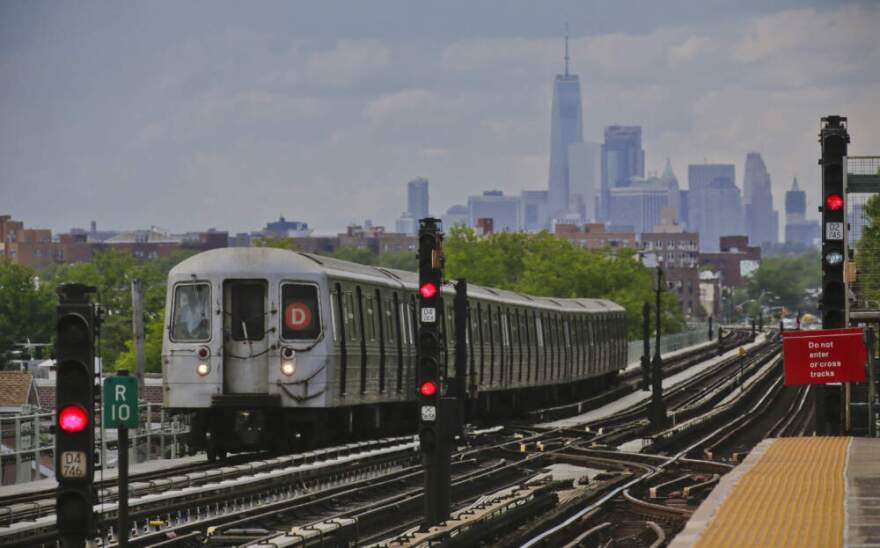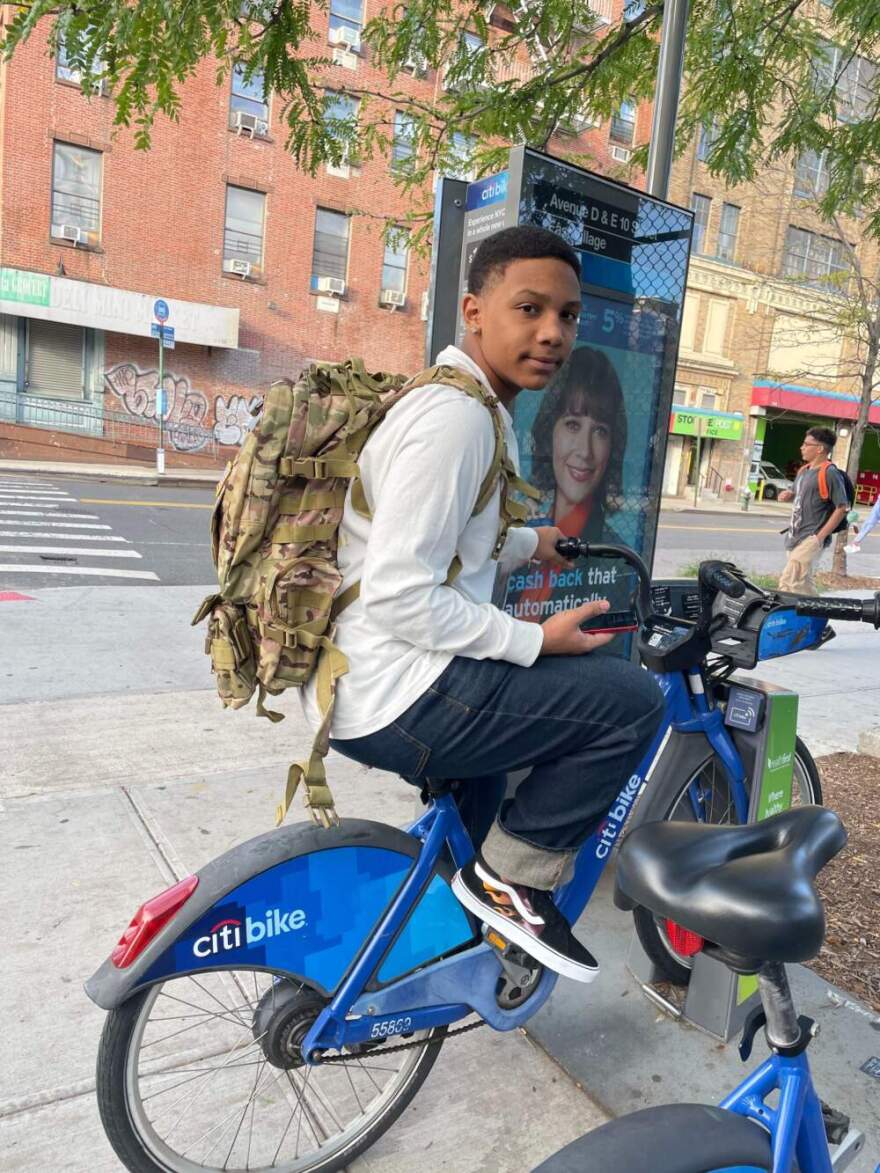
When police came to New York City mother Norma Nazario’s home in 2023 to tell her that her 15-year-old son Zackery had died in a horrific subway surfing accident, she was stunned.
But when she later opened his phone, she was shocked by the social media videos and posts she found not only of her son’s exploits riding atop New York subways, but also of others’.
Angry and devastated, she contacted attorney Matthew Bergman, who founded the Social Media Victims Law Center. Together, they launched a suit against Meta and TikTok, contending that the accident was a result of direct and foreseeable programming and design decisions that prioritize engagement over safety.

Meta disputes the charge, saying these videos violate their policies and are removed as soon as Meta becomes aware of them.
“Leaders and transportation authorities have grappled with the challenges of subway surfing for decades,” said Chris Sgro, a spokesperson for Meta, the owner of Instagram and Facebook. “Videos encouraging this kind of dangerous activity violate our policies, and we remove them when we become aware of them. We will continue to work with MTA to address this issue, and will vigorously defend ourselves against this suit.”
TikTok would not comment on the lawsuit but said when users search such terms as “subway surfing,” they’re redirected to a resources support page that says, “Some online challenges can be dangerous, disturbing, or even fabricated. Learn how to recognize harmful challenges so you can protect your health and well-being.”
10 questions with Norma Nazario and Matthew Bergman
Your personal story started with a horrible knock on the door by police. What did they tell you?
Norma: “Oh, gosh, it’s hard.
“I never, never, never in my mind [thought] that they were coming to tell me that my son had passed away because of that horrific challenge in TikTok called subway surfing. The train was about to go under, into the tunnel towards Manhattan. The train goes in. The bridge goes lower.
“He got hit in the back of the head because of the beam, died instantly of a hemorrhage. So I’m hoping that he didn’t feel the rest because he was run over by the wheels, the front and the back, and he was electrocuted as well.”
And you didn’t even know there was such a thing. He told you he was going for a bike ride with his girlfriend. This is a good kid who goes boogie boarding at Rockaway Beach.
“Yeah, he used to look up history. He researched. They used to call him the historian…since he was a young kid.”
But then he’s killed in an incomprehensible way, and police give you his phone and you’re blindsided again.
“This is the thing that I be telling parents: They need to learn about social media and their kids’ accounts and all that, because when it came to subway surfing, the other subway surfers used to put it in their feed because he knew I would see it.”
What was your reaction when you saw this?
“I dropped the phone. I dropped the phone when I saw him hanging in the back of the train and on top of it.
“Number one, I didn’t know that kids were dying before Zack. You know, this is why I’m doing this, because I never saw it.
“Number two, Zack died a horrific death. He got knocked over. He went over and under. He got twisted. He got run over, he got electrocuted, and his phone was intact.
“And I knew my son. We were so close to each other. And I know that he held that phone until he couldn’t anymore to tell me, ‘Mom go in my phone. I’m sorry.’ Oh my God. ‘Mom, go in my phone. Hey, look, I’m sorry that I did this. Look and do something about it. Please.’
“So this is why as soon as I opened the phone and I said, ‘No, this cannot happen to any other kids. Something has to be done. I’m going to start to try to do something. I’m not going to stop because this is horrible.’
“Social media is killing these kids, pushing the algorithms and all that. But the physical, where they dying is in the MTA [Metropolitan Transportation Authority] trains. Physically, they need to do something. Sensors, put spikes, put barbed wires, whatever it is, close the doors. And if it’s an emergency, they open. We have not heard news of anyone dying in the trains if the doors are closed. Nobody has said ‘I died because the doors couldn’t open.’ The opposite. They died because they’re climbing.”
Matthew, as you know, Norma filed a lawsuit in New York against TikTok and Instagram. A judge allowed that to go forward. It’s in discovery. She also filed claims against the MTA. Those were dismissed. TikTok says it has employees looking for these videos. Thousands of videos are taken down. They’re not commenting directly on this case. You say what?
Matthew: “I say too little, too late, not enough. They target kids with algorithms to addict them. They design these products to maximize engagement, to sell more ads. And they do that by showing kids what they can’t look away from.
“One of the most horrific images in this case is one of the subway surfing videos that Instagram shoved down Zackery’s throat. And in that video, there is an actual advertisement for a product associated with subway surfing. Instagram made money on Zackery Nazario.”
And when you say ‘shove down his throat,’ you mean the algorithm drove it to him?
Matthew: “Exactly. He doesn’t have the judgment of an adult. He’s craving, as most adolescents do, the adulation of their peers. Subway surfing is promoted with music, which means they have blood on their hands.
“If Instagram and TikTok were releasing cholera in the water. Everyone would say that they’re responsible for the deaths that they’re causing. Promoting these subway surfing videos is no different.”
Matthew, there’s a law, 1996 Communications Decency Act, that protects online platforms from being held liable for things that their users post. How do you get around that?
Matthew: “Well, we’re not talking about the content, per se. We’re talking about the design of the algorithm and the design of the platform that is explicitly designed to addict kids like Zackery Nazario. They hire social psychologists and neurologists to design a platform to addict kids.”
Norma, what do you say to people who say it’s your responsibility as a parent to see what they’re doing on social media?
Norma: “Well, it is and it’s not. You know, they [teenagers] hide the apps on their something. Let’s say Instagram, they’re going to put it in like a calculator. They’re going to put TikTok in, like, the pictures and all that. This is what I tell parents. You need to learn about social media because I wish I did.
Matthew: “These platforms are designed to evade parental oversight.”
How so?
Matthew: “Instagram actively promotes kids opening multiple accounts under different names. Their own documents refer to that as a value add.”
New York Governor Hochul launched a campaign. It’s a partnership with New York Public Schools called “Ride inside, stay alive”. It features cartoons, public announcements from celebrities. Is that enough?
Norma: “Young people, especially these days, they don’t listen. They’re not going to pay attention to that. We need to do action.”
Matthew: “You know, since Zackery’s death, there have been significant efforts, not enough, but efforts by MTA and the New York police and the state to curtail subway surfing. Yet the phenomenon is increasing, testimony just to the power of social media.”
This interview was edited for clarity.
____
Robin Young edited this segment for broadcast. Karyn Miller-Medzon produced it. Michael Scotto adapted it for the web.
This article was originally published on WBUR.org.
Copyright 2025 WBUR

